"They were right about flying cars. The Honda Civic has been around since 1972, a time when the world was looking romantically towards the 21st century and muttering to itself - “we’ll all have flying cars by then.” Of course, "

A Civic duty: four-and-a-half decades of the Honda Civic
The Honda Civic was one of the first superminis of the 1970s, and its arrival not only brought lightweight advanced engineering ideas, but also the UK presence of Honda itself
Say ‘Honda Civic’ to any Millennial, and there’s a fair chance that the fire-breathing, engine-screaming EK9, EP3 or FN2 Type R versions of Honda’s family hatchback will be their first weapon of thought. But, it wasn’t always like that. Over 45 years ago the first-generation Honda Civic was even more of a marque-defining car than its more recent high performance descendents.
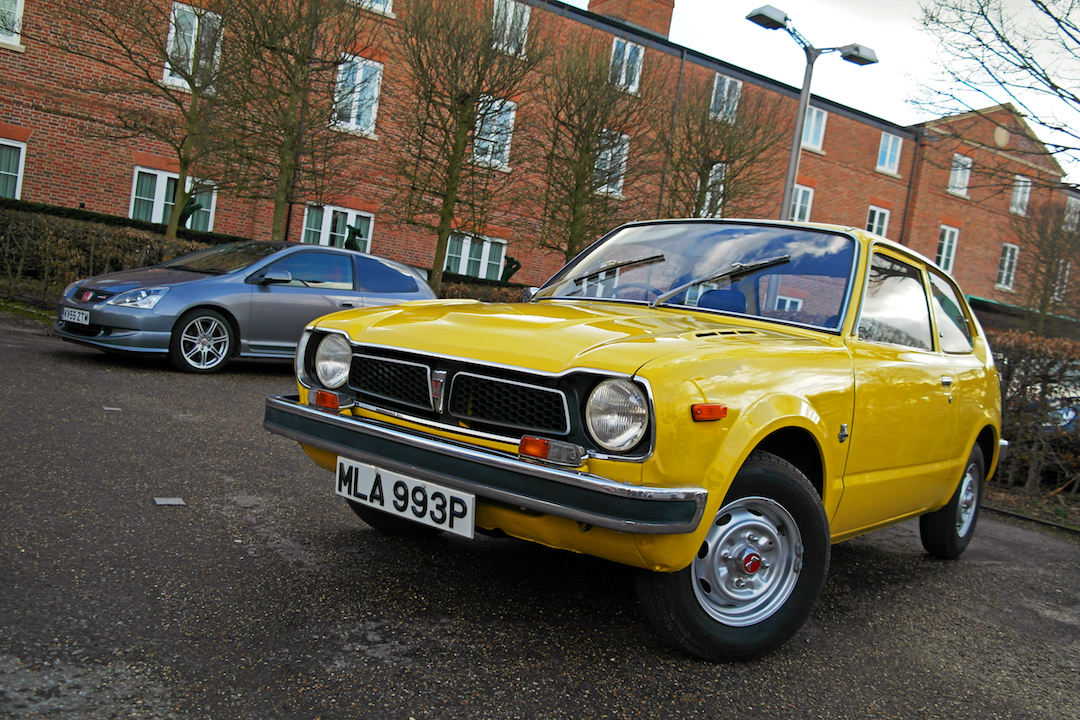
After a false start with the compact 1969 1300 and dabblings with two-cylinder ‘Z’-series Kei cars, Honda almost abandoned car making completely, but it hadn’t bargained on its new technological baby being a success. Debuting on 11 July 1972, the first-generation Honda Civic featured more avantgarde hatchback styling (even though an opening rear door didn’t arrive until September of that year) and a raft of contemporary technologies – including Honda’s Compound Vortex Controlled Combustion (CVCC) reduced emissions engine system, which skirted the need for both unleaded fuel or a catalytic converter and pacified ever-tighter US pollution laws.
[See the obscure video from the time here: https://youtu.be/T0tSAHr4klo]
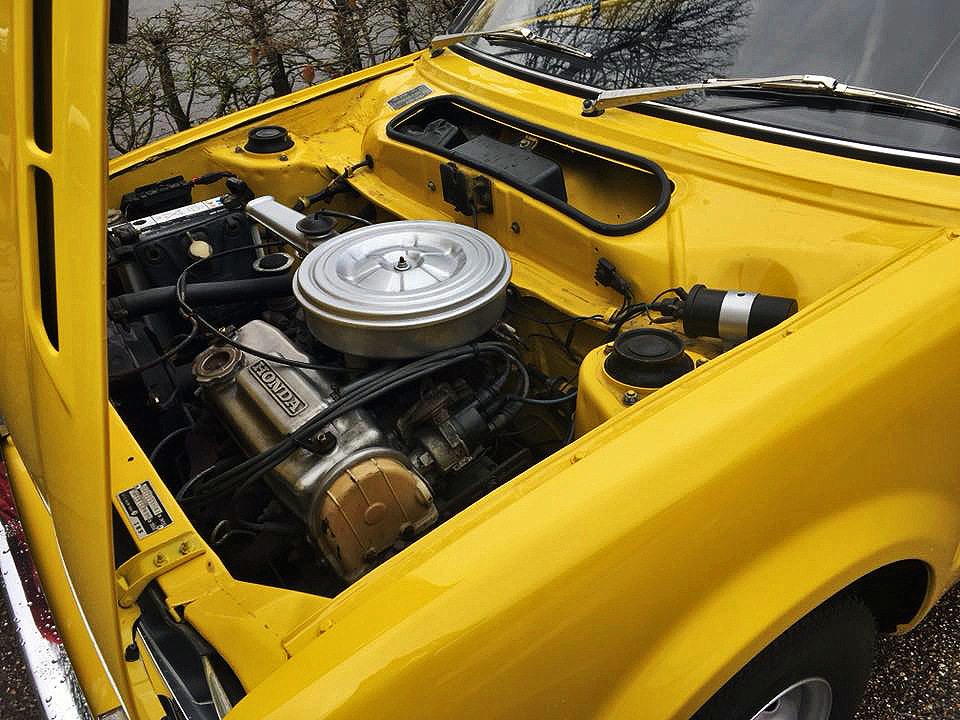
Based on a chassis similar to the diminutive N600, and even though it was bigger in every measurement, the first-generation Civic still had diddy dimensions. Approaching Honda’s pristine Carnaby Yellow press fleet heritage car – an ex-press demonstrator and 1975 UK sales brochure star with chassis number ‘003’ – it looks every bit like the Tonka toy Mk 1 Civic I had as a kid. Except there’s no skirting board or garden path paint scuffs (or fat white plastic wheels) on this bantam-sized beauty.
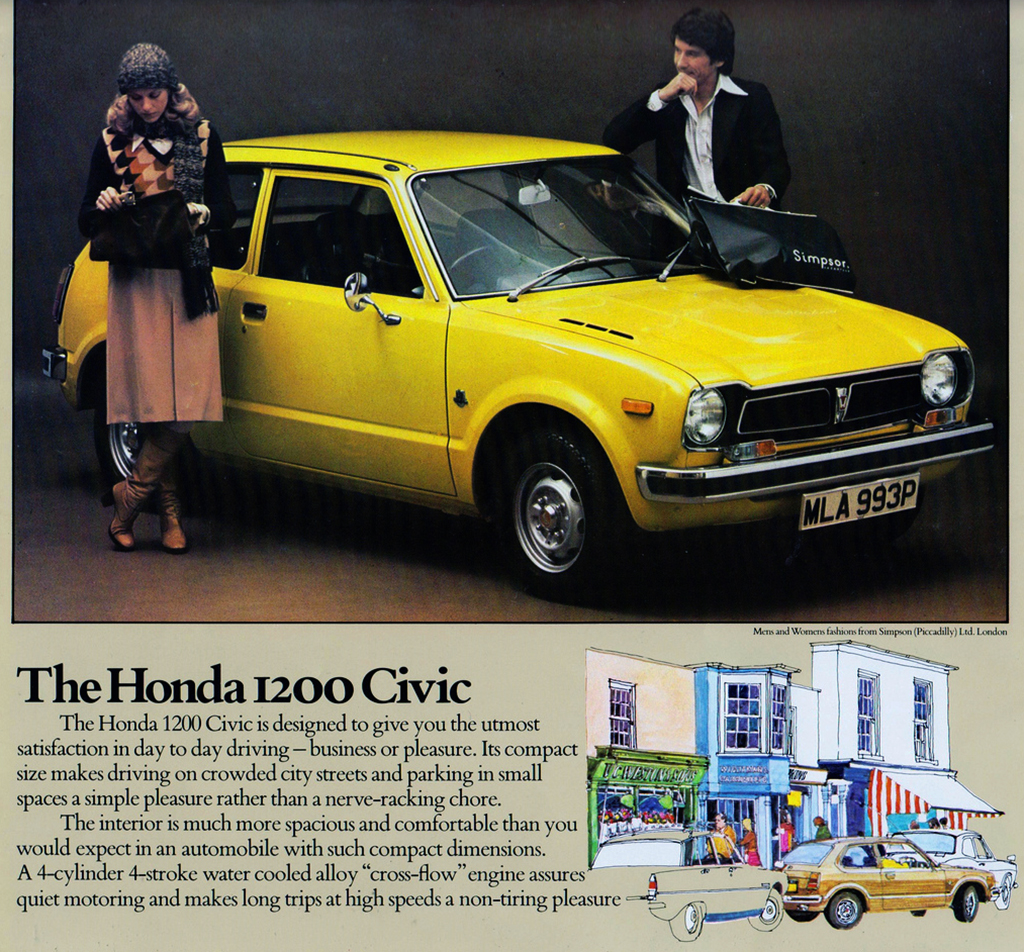
At just over 3.5m long, the original Civic may be small, but step inside, and it feels surprisingly airy, thanks to that 1970s trait of wafer-thin windscreen pillars, and the lack of a centre console. Lots of bright painted metal also help with the impression of roominess, but don’t do much for the ‘Deluxe’ designation. We’re so used to every inch of modern car interiors covered in some sort of tactile material in 2018, we forget how sparse even ‘luxury’-trimmed cars of yesteryear were.
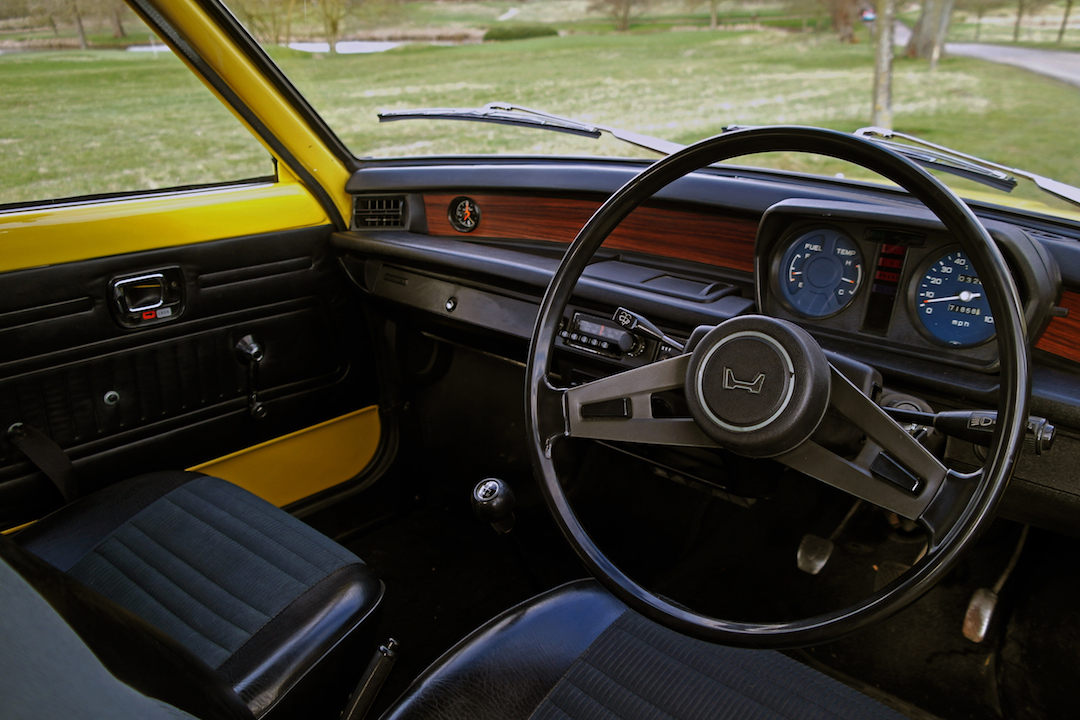
There are some nice touches, though. Spindly column stalks sprouting from the steering column control the lights and wipers, door handles have a sliding button to lock, and the blue-faced dials in their cute separate binnacle perched atop the ‘wood’-faced dashboard are seemingly at odds colour-wise with the rest of the car. One thing which isn’t out of place is a quality feel, something which has largely sustained to Civics of today.
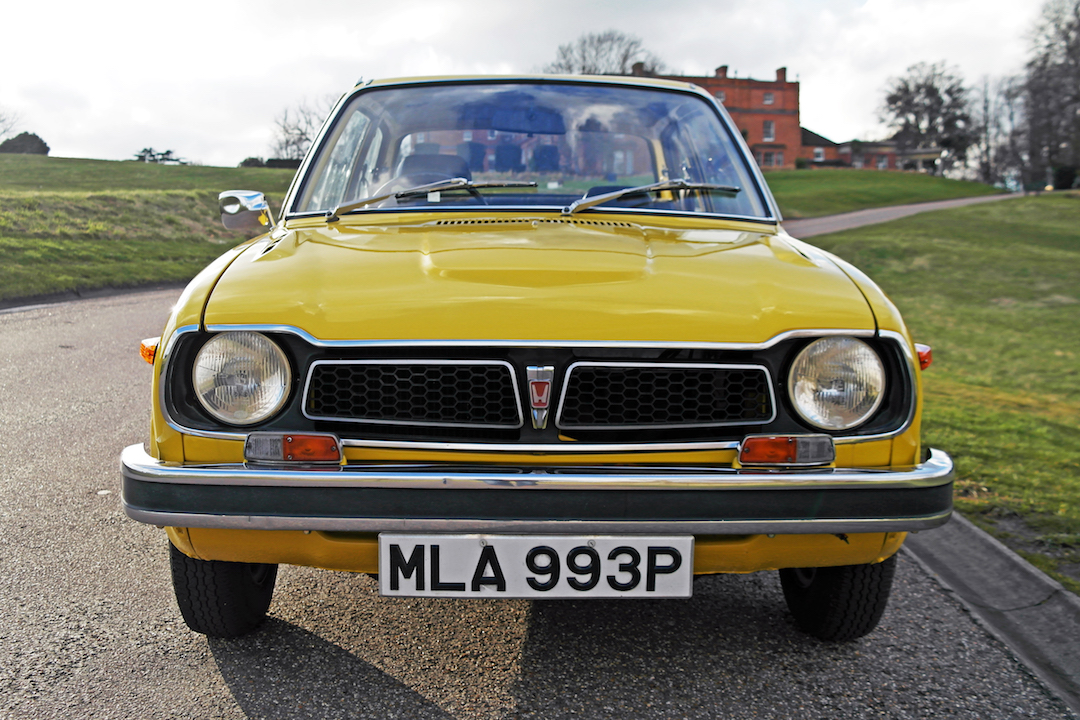
Outside, the distinctive indicators peep out from above the front bumper, while the rear numberplate light blocks are another Mk 1 Civic trademark. Heck, there are even hexagonal grille inlays, long before the Volkswagen Golf GTI used them. More pint-sized pointers to the little Civic’s petite personality are the red-badged steel wheels: at only 12 inches they’re tiny, but, as the car itself is so small and, at just 700kg, light, they’re perfectly in proportion.
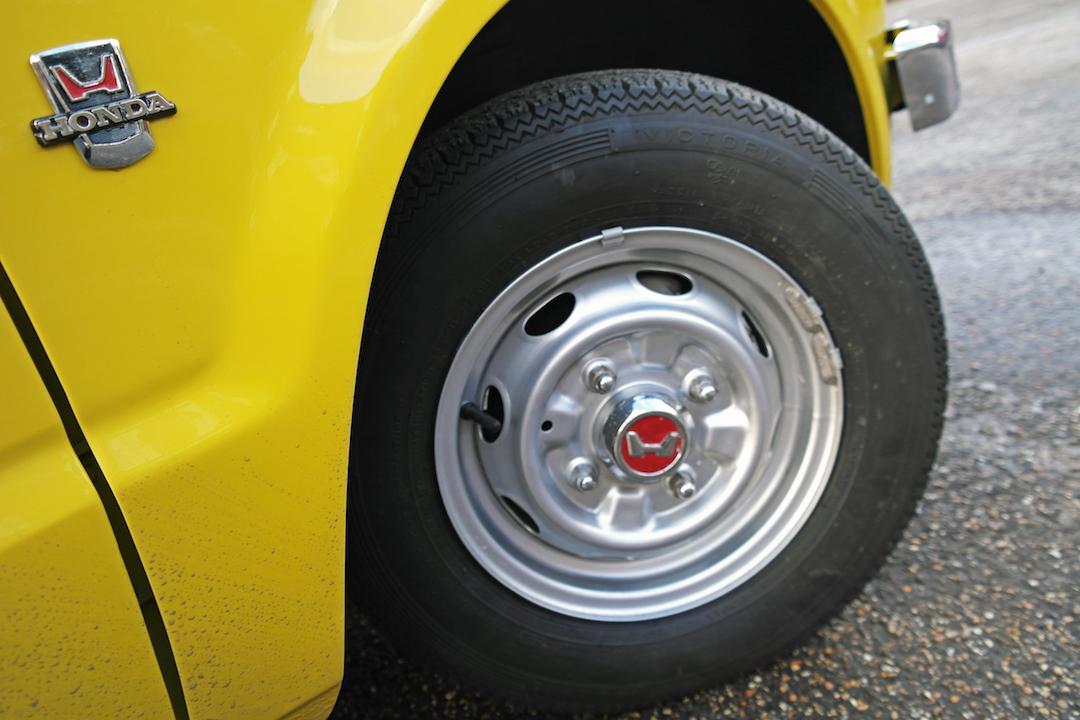
Start up the 1.2-litre, four-cylinder, all-aluminium crossflow engine, and you’ve got 50bhp at your disposal. That’s usefully more than early versions of its contemporary Fiat 127, Ford Fiesta, Peugeot 104 or Volkswagen Polo rivals, and the Civic bowls along quite happily, its wand-like gearstick slicing through its four-ratio gate.
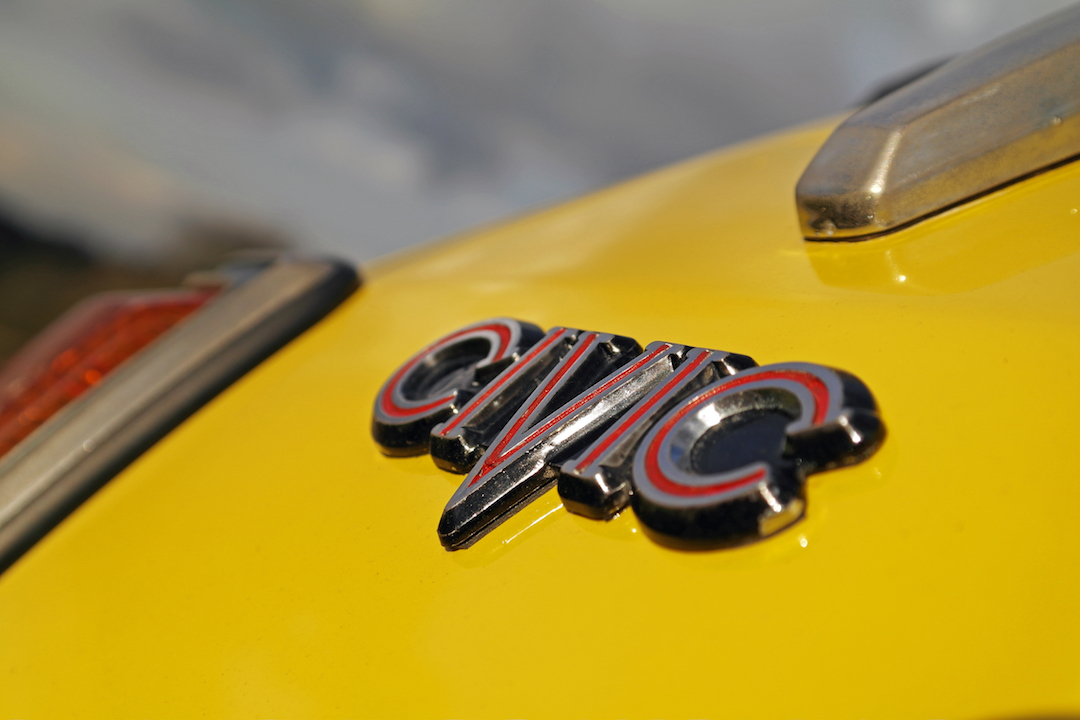
If original buyers wanted more pep and practicality, the 1500 Civic pleased with 70bhp and a four-door body. The larger-engined and more powerful Civic could also be ordered with the comedically-named ‘Hondamatic’ two-speed semi-automatic transmission, which was another technological breakthrough few rivals could match.
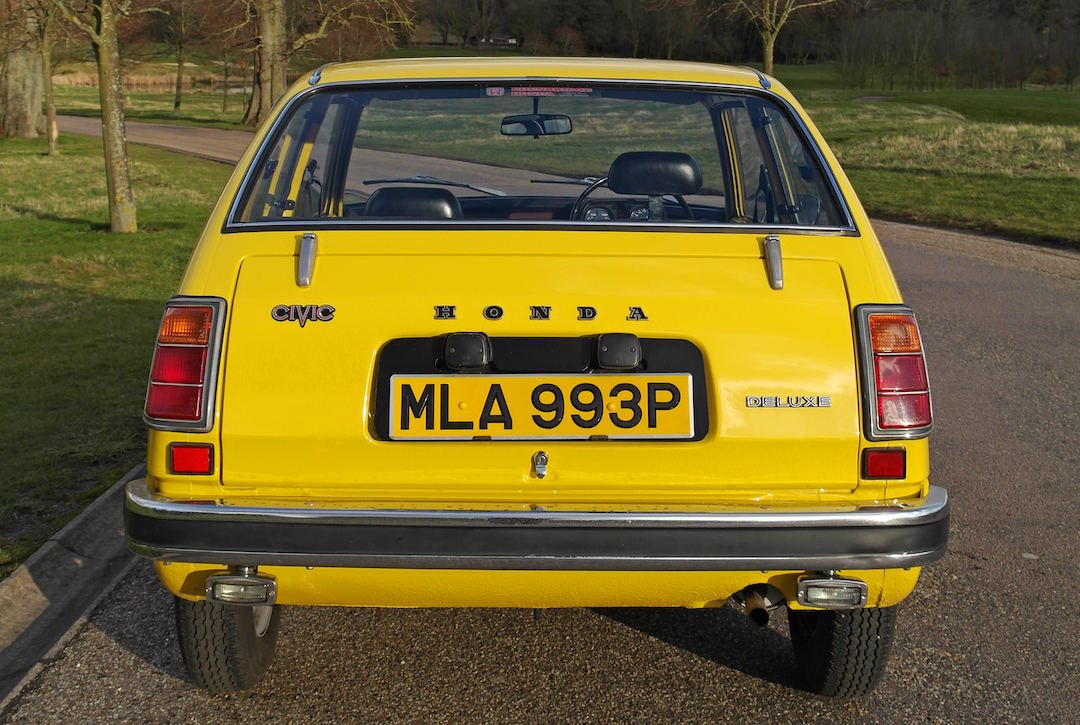
There was even an estate (or ‘Van’) version in selected markets, while the go-faster RS – ‘Road Sailing’ – with its overdrive-equipped four-speed gearbox, twin carbs and semi-bucket seats was a kind of precursor to the Type R. Out on the road though, partly because of its rarity in 2018 and this Deluxe’s eye-popping colour, Honda UK’s Mk 1 Civic turns as many heads as a modern-day NSX supercar.
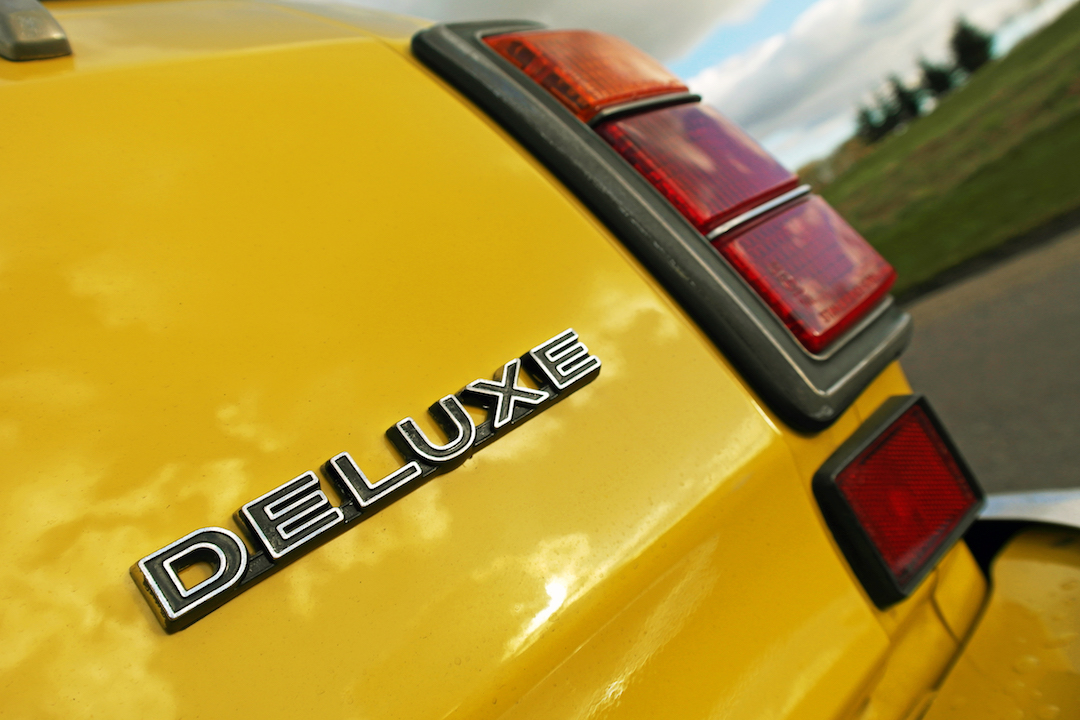
A joy to drive, the heroic Honda hatch has crisp controls and thanks to its still-new-in-1972 transverse engine, front-wheel drive, independent suspension layout, scoots through traffic cheekily. Heroic? Why not? It may not be a rev-hungry, VTEC-screaming Type R, but this 1970s pocket-sized Japanese yellow car played a more significant part in Honda’s history.
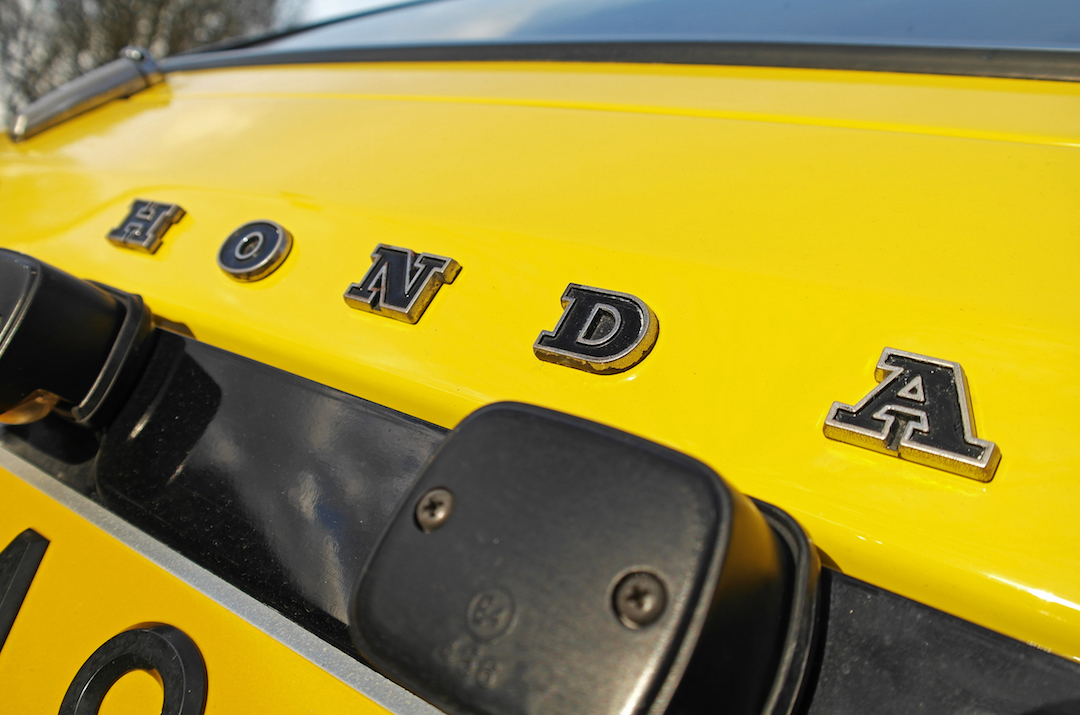
The first-generation Civic launched Honda as a mass-market car brand in the UK. In a neat twist of synchronicity, the latest tenth-generation of the Japanese family hatchback is built in Swindon, the first Civic having rolled off the Wiltshire lines in 1994. And while it’s perhaps not quite so groundbreaking as its original forebear, the latest Civic packs just as much technical know-how under its sharply-creased and love-it or loathe-it looks.
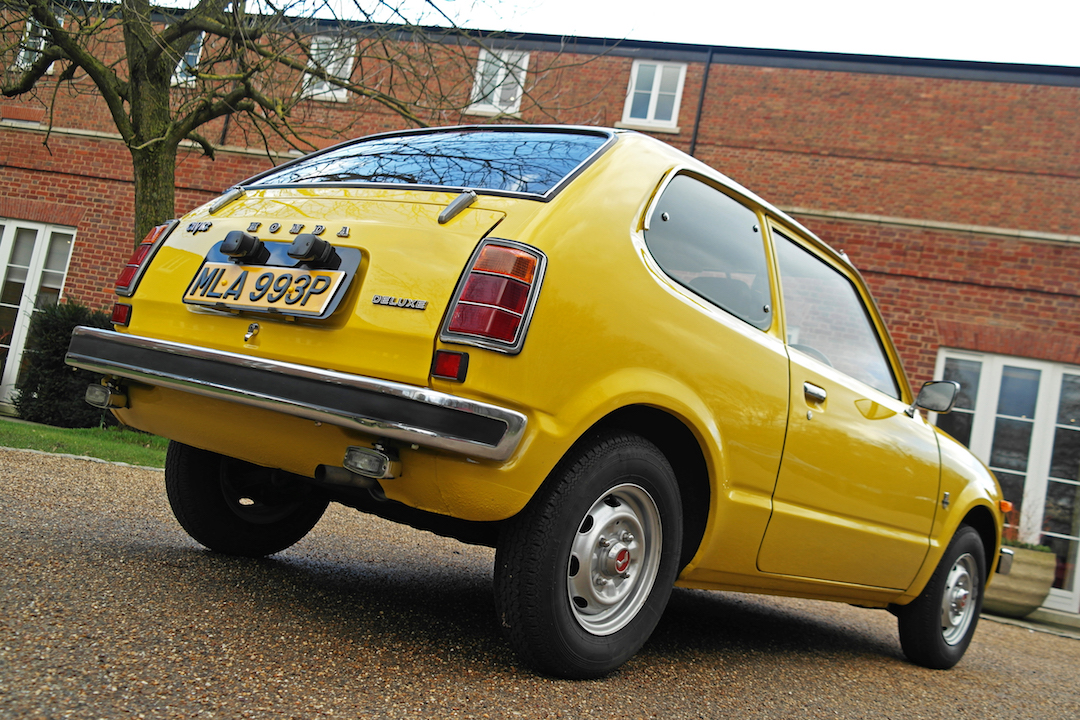
Lightweight and bristling with engineering prowess: the cute-as-a-button Mk 1 Civic laid the foundations to Honda’s four-wheeled presence on these shores. While those principles have been instilled in the company’s products ever since, it’s all thanks to that Lilliputian hatchback that there is a presence here at all. It has more than performed its Civic duty.
CLICK TO ENLARGE










